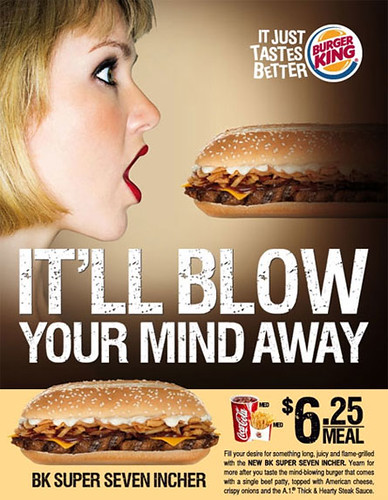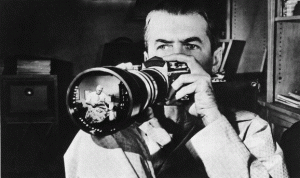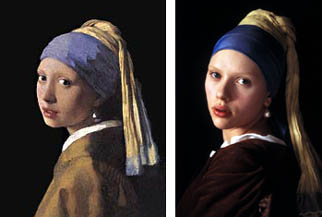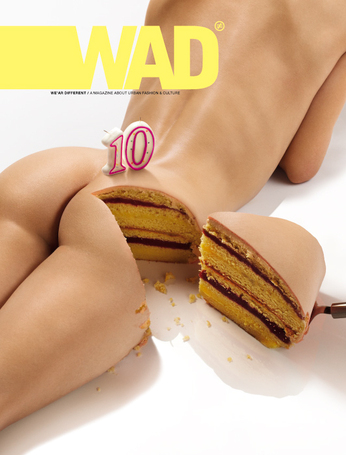
According to Laura Mulvey, the male gaze in the media occurs when mediums such as the Internet, television, radio, film, and art places the audience in the perspective of a heterosexual male. We see this in pop culture today and has incorporated with it, a universal vision of women. This vision focuses more on a woman’s physical appearance and views them as objects to be won. With programs such as the Bachelor and Rock of Love presenting a variety women competing for the attention of one man, often using their sexuality. Additionally magazine ads display a half naked female body to sell a beverage or cosmetic supplies, television commercials also highlight a woman's curves to attract viewers. It maybe nearly impossible to objectify women without incorporating her submissiveness through her sexuality, yet by looking back into history we can understand why these views toward women came to be. However before the media became the technological mass medium it is today, Berger traces medias earliest roots down to art, specifically nude European oil paintings of women as early the 13th and 14th centuries, and explains how artists in that time period portrayed these women.
In John Berger’s “Ways Of Seeing”, Berger explores how our society has evolved its social views of women. Berger states that the social presence of a woman is different in kind from that of a man. Saying that men’s presence is dependent to the promise of “power” which he personifies. And that the promise of power can be represented in various characteristics be it “moral, physical, temperamental, economic, social or sexual.” (Berger 45) This notion insinuates that mans presence centers around his potential to provide for a woman.
However, women are viewed entirely differently. A woman is taught from infancy to “watch herself”(Berger 46), or more correctly the image of herself according to a man, this social protocol is directly related to the protection of men over women throughout history. A woman comes to consider the “surveyor” and the “surveyed” as two elements that I identify her as a woman. Berger writes that “The surveyor of a woman in herself is male [and the] surveyed is female. Thus her presence is manifest in comparing her true self to the ideal image of herself in a mans eye. A mans eye is attracted to a woman’s raw sexuality, her scent, voice, choice of clothing, and physical beauty. A woman is therefore so intrinsic to please the man in appearance and therefore one may simply reason that “men act and women appear”(Berger 47)
The earliest paintings depicted Adam and Eve posing in there moment “shame”, after they had eaten the fruit of the tree of knowledge of good and evil, and realized their nakedness. Their Shame isn’t too much in relation to the nakedness of one another, but their nakedness to the audience viewing. As the theme of painting women became more secular the insinuation of a woman being aware of her nakedness to a spectator, usually thought to be male, became more dominant in the art world. The painting of women in nakedness began the evolution of societies view of women in a “male gaze”. Berger states “she is not naked as she is. [Instead] she is naked as the [male] spectator sees her. Artists then began painting as the spectator choosing subject (women) that cater to his own sexuality, making nakedness of the woman as an expression of her submission to the owners feelings and demands.
The oppositional gaze on the other hand not only brings out the importance gender, but also of race. Bell Hooks, in her essay The Oppositional Gaze: Black female spectators, speaks about the confrontational resistance to challenge authority, by gazing back at a spectator in opposition, by looking back, it is a sign of defiance, this defiance is seen in turn as empowering oneself with knowledge of the present to better serve the future(Hooks 131). The authority according to Hooks is the film industry and their negative views toward black females. The oppositional gaze is a critical view developed by black female spectators towards Hollywood and its representation of black woman not only as racially subordinate to white people but also additionally subordinate according to gender thus making the black women the lowest form of subordination.
Black men certainly had easier then black women when it came to social status because “their role as spectators, black men could enter an imaginative space of phallocentric power that mediates racial factor. This gendered relation to looking made the experience of the black male spectator radically different from that of the black female spectator” (Hooks 118). It was exceptionally difficult for black females to identify with the black characters in the film because they were either portrayed as playing a white character, servants to white people or not portrayed at all. It was not until the Amos 'n Andy radio show that the depiction of African American women as overbearing, assertive, and emasculating characters became prevalently associated with the name Sapphire. Black women could “Identify with Sapphire in her frustrations and woes” and “as a symbol of the angry art of themselves white folks and black men could not even begin to understand”(Hooks 120)
Throughout our lives, we are deeply influenced by our surroundings, we gather knowledge, learn by observing, we then filter people behaviors and principles and integrate them into our own way of thinking as socially normal. As children, we have little objectivity in the way we understand our society. In its place, our thoughts on what is normal are malleable thus what children see are the physical and social standards, that we have placed as human beings, toward not only women but black women. From these norms children learn how to think about the world around them. As children we are fed the proverbial notions of surveyor vs. surveyed, breadwinner vs. homemaker, women vs. men, black vs. white. Even though society can mold and shape our ideas it is essential that one must come to an understanding to how these notions came to be by looking back into history, finding the problem, and fixing it so that these “backward” notions will no longer hold superior thought as de jure or de facto.











